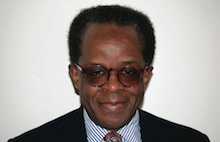May 22, 2015

Lee A. Daniels, NNPA Columnist
“Americans don’t want to imagine that our racist history is actually an ongoing racist reality. We like to look at racism as a thing that has gotten better (if not gone away completely) and that the way black Americans are treated in society is actually colorblind.”
Those words, written by Washington Post reporter Philip Bump a year ago, provide context for the polls of last week showing that Americans as a whole believe “race relations” have grown sharply worse in the aftermath of the death of Baltimorean Freddie Gray in police custody and the protests it provoked and why we once again see a widening of the “racial divide” on issues involving police and Black Americans.
For example, the New York Times/CBS News poll found that 61 percent of Americans believe race relations now are generally bad, up from the 44 percent who said so after the police killing of Michael Brown last summer. The Wall Street Journal/NBC News survey found that 96 percent of those polled expect more racial disturbances this summer.
The Pew Research Center on the People and the Press poll sought answers to five different major questions in the aftermath of the Baltimore protests. It found that, on the one hand, overall 61 percent of Americans believed the violent protests were largely the result of some people “taking advantage” of the situation to engage in criminal behavior (54 percent of Blacks said so compared to 66 percent of Whites).
On the other hand, overall 56 percent of those surveyed also said that tensions between the police and the Black community played a significant role in the protests as well.
Not surprisingly, these and other surveys found that Blacks and Whites had significantly different responses to many of the questions. For example, the Wall Street Journal/NBC News survey found that 60 percent of Blacks said the Baltimore protests reflected “longstanding frustrations about police mistreatment of African Americans.” Just 32 percent of Whites agreed. In the New York Times/CBS News poll, 79 percent of Blacks said police are “more likely to use deadly force against a black person” than a White individual; but only 37 percent of Whites said so.
None of these surveys’ individual or overall findings are surprising, of course. In fact, Americans’ new worry about worsening race relations is just the latest turn of the wheel of the continuing dynamic of “racial déjà vu” I wrote about in a recent column: a racial crisis loop rooted in the age-old issue of Black Americans’ status in American society.
Incidents of sharp racial controversy that push that issue to the top of the American agenda always leads Americans – largely, White Americans – to believe race relations are getting worse.
One reason is that White Americans have always been significantly shielded, by government and private-sector actions, from the reality most Black Americans of high and low status face every day. Another is that the White majority has historically always taken refuge in the belief that the lack of a racial explosion means, as Bump wrote, the promised land of racial equality of opportunity and treatment has arrived. They’re repeatedly shocked to discover that’s not so.
One fresh proof that’s still not so today can be found in the April employment data released last week by the federal Bureau of Labor Statistics. The good news was that the overall unemployment rate was essentially unchanged at 5.4 percent. The “shocking” news was that, while the White unemployment rate was 4.7 percent, the Black unemployment rate in April was 9.6 percent — and that this actually represented a decline from its being above 10 percent in February and March. (The unemployment rate for Asian Americans was 4.4 percent; that of Hispanic Americans was 6.9 percent.)
Think about that: While the White unemployment rate is officially near the generally accepted level for “full employment,” the Black unemployment rate is now just a few points below the 10 percent unemployment high-water mark reached during the Great Recession.
And that’s not merely the result of poorly-educated Blacks lacking labor-market skills. A 2014 study by the Center for Economic and Policy Research, a progressive Washington-based think tank, found that in 2013, 12.4 percent of Black college graduates between 22 and 27 were unemployed, compared with the national rate of 5.6 percent, and that even those Black graduates with degrees in the sciences, engineering, technology and mathematics were enduring high unemployment and underemployment rates.
Study after study over the past two decades has shown why that particular gap persists: continued racial discrimination in the job market.
That’s another “racial reality” America’s White majority likes to pretend it can’t see.
Lee A. Daniels is a longtime journalist based in New York City. His essay, “Martin Luther King, Jr.: The Great Provocateur,” appears in Africa’s Peacemakers: Nobel Peace Laureates of African Descent (2014), published by Zed Books. His new collection of columns, Race Forward: Facing America’s Racial Divide in 2014, is available at www.amazon.com.

